India is setting itself up for a third wave of Covid-19
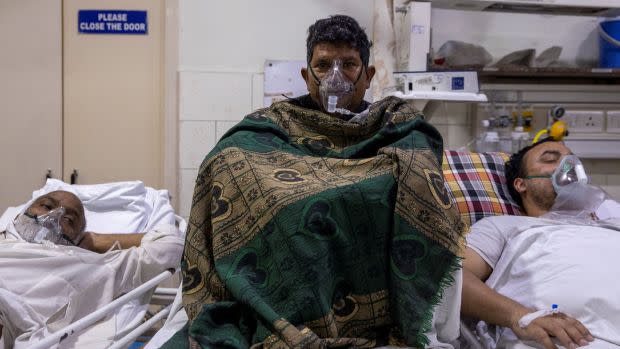
On his first day of fieldwork, on April 19, Shivam Pratap Singh was tasked with bringing an oxygen cylinder to the office of the NGO he was volunteering with. The 27-year-old master’s student at Tata Institute of Social Science soon found himself in hours-long lines to refill cylinders. It was one of many encounters Singh, like millions of other Indians, would have with the country’s swiftly unravelling healthcare system.
“We stood in queues at oxygen refilling stations for 13-14 hours, and sometimes even that would not lead to anything,” Singh recalls. On one occasion, he and other volunteers were waiting in the queue at a filling station in Delhi from 6am to noon, only to be lathi (baton) charged by the police for crowding and allegedly participating in the black market.
Singh says he saw caregivers completely broken from countless days of hunting for oxygen. “I saw many people crying helplessly,” he says. “One has to remember that a filled oxygen cylinder can weigh up to 70 kg, and carrying it alone is no easy feat. I saw people whose shoulders were bleeding from carting the cylinder around, and they had no choice but to continue standing in queue for this.”
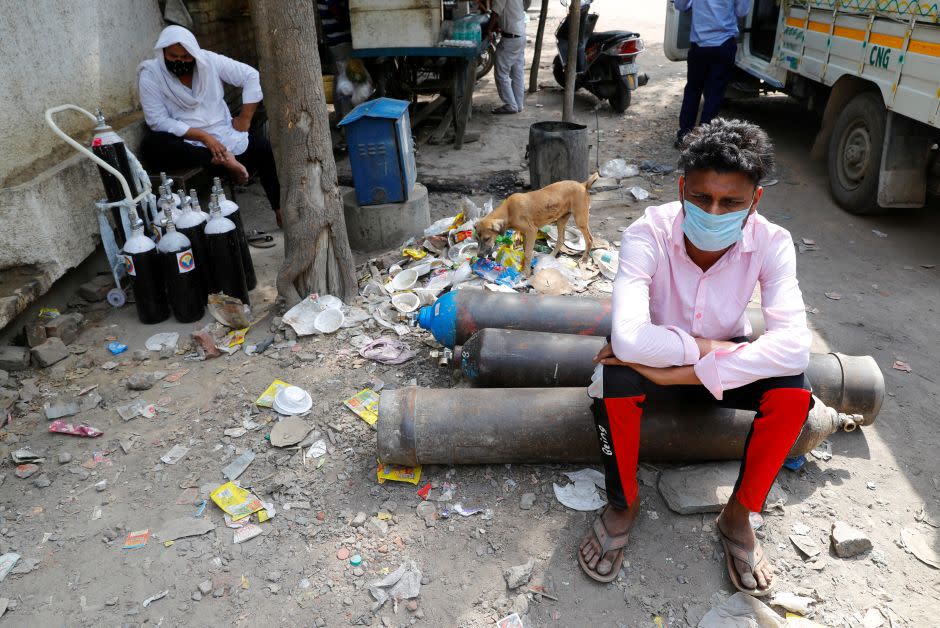
Hauling oxygen cylinders for Covid-19 patients took a toll on their families and caregivers.
While Singh was standing in increasingly desperate lines, the Delhi government was embroiled in a bitter legal tussle with the Narendra Modi government over oxygen allocation. The city also lacked a war room to triage emergent cases—a gap that soon proved glaring. “The triage has to be created by the government so that those of us offering aid on the ground are not saddled with an ethical dilemma,” Singh says.
Delhi, the nation’s capital, should have been better prepared for the Covid-19 disaster that slammed India in April and May, especially considering how it was wreaking havoc in Mumbai and parts of rural Maharashtra before then. But the government was MIA, leaving NGOs, nonprofits, and people like Singh to make life-or-death decisions: who would get an oxygen cylinder or a life-saving treatment, and who would not. Whether there has been enough systemic change as a result of that second wave to prevent or even mitigate a third is a crucial question, whose answer remains to be seen.
Ignoring early warning signs of Covid
For many Indians, it felt as though the second wave of Covid-19 came out of nowhere.
In large cities, life had returned to a pandemic “normal” since January. Weddings, religious holidays, and even political rallies carried on in person, as though the country had miraculously proved wrong the world’s doomsday predictions.
After all, one of the most populous countries in the world had in February recorded just under 20,000 cases, when countries like Brazil and the US were tracking upwards of 100,000 a day. India’s low case counts led policymakers—including prime minister Modi and health minister Harsh Vardhan—to declare victory over the pandemic.
Come April, it became clear that said victory was nothing more than the calm before a cataclysmic storm. Not only did India surpass its own previous peak of 98,000 cases a day, it soon crossed the US’s peak to become the country with the worst Covid-19 daily figures. Week after week, the country hit grim milestones—from 100,000 cases a day on April 4 to 400,000 on May 1.
All the while, the states of West Bengal, Assam, Kerala, and Tamil Nadu, and the union territory of Puducherry, held elections, political battlegrounds that became a visual nightmare for those watching the Covid-19 numbers go up. Photos from the Kumbh Mela, the world’s largest Hindu congregation, with people gathering in the millions, did not help curb these worries. In the northern state of Uttar Pradesh, school teachers were forced to appear for village election duties, costing more than 1,600 of them their lives.
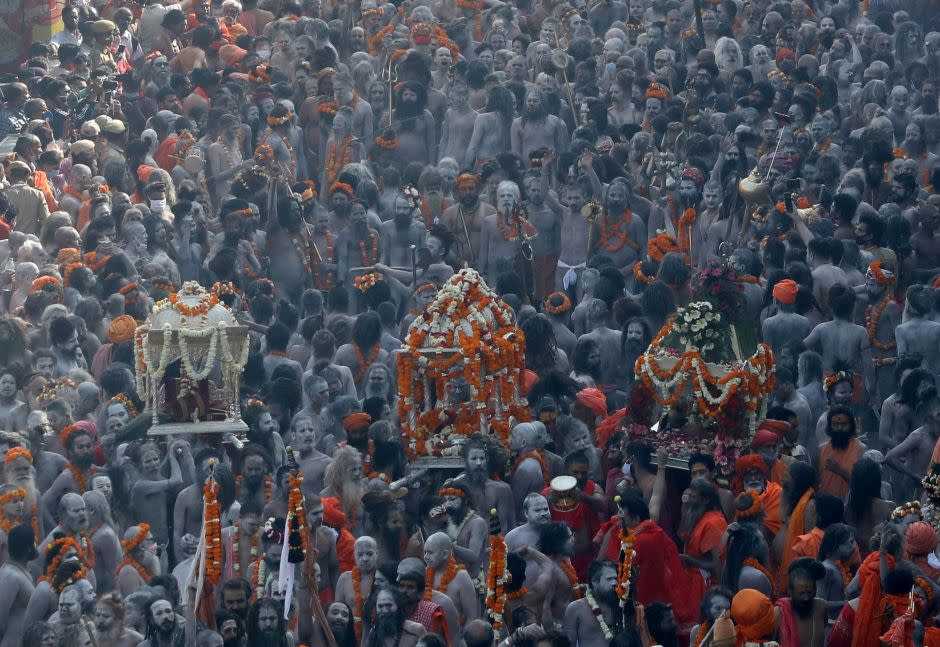
The world’s largest Hindu congregation, the Kumbh Mela, took place in central India while the second wave of Covid-19 raged on.
From just a few hundred cases in March, Covid-19 cases in Delhi crossed 25,000 a day starting April 18, a 900% surge in new infections in just 18 days. The city’s infection rate went from less than 1% to nearly 38% in just over four weeks. Seemingly overnight, Delhi found itself in Covid-19 hell.
The Covid tsunami that swept Delhi
For those in distress, social media was the only functioning cog in the entire healthcare support mechanism.
Tehseen Poonawalla, entrepreneur and activist, and his wife Monicka Vadera Poonawalla, who had undertaken relief work for sex workers during the first Covid wave, were actively responding to SOS calls on Twitter. (Poonawalla is not related to vaccine baron Adar Poonawalla.) “In the second wave, when we started seeing people dying for lack of oxygen, it completely shook us up,” he says. “How can a country striving to be a global economy not have oxygen for its citizens?”
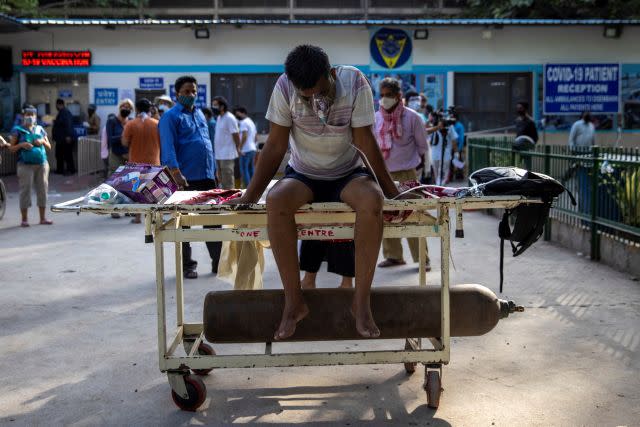
In New Delhi, the capital of the country, the areas outside emergency rooms were teeming with patients in April.
By May 1, the situation became so dire that even large hospitals were running out of oxygen. Delhi’s popular Batra Hospital lost 12 lives in one night, among them a senior doctor.
Through his network and resources, Poonawalla began arranging for oxygen beds and filled oxygen cylinders wherever he could. “I personally sent my vehicle to Punjab and Rajasthan, where our drivers would wait for 30-40 hours, fill up the tanks, deliver these to the hospitals, and go back to make the same trip,” he explains. “Never forget, we even paid the government goods & services tax on these transactions.”
Similarly, organizations like Hemkunt Foundation and some Sikh gurdwaras in Delhi began setting up makeshift oxygen camps for critical patients who needed care while they waited for a hospital bed. Smaller NGOs also roped in young students to coordinate beds, refill oxygen cylinders, and find medicines.
In smaller towns, autorickshaw drivers like Bhopal’s Mohammad Javed Khan modified their vehicles into makeshift oxygenated ambulances. In some states, families reported paying thousands just to ferry patients to hospitals, and people like Khan offered their services free of charge to offset some of the economic suffering.
“Our biggest failing as a country was the lack of empathy for our fellow citizens. The government patted its back too early for controlling the pandemic and there was a complete lack of scientific approach,” says Poonawalla. “We all knew the second wave was coming and we suffered because of the lack of wanting to look at it and be prepared for the worst.”
Poonawalla was among the countless good Samaritans using personal resources—their network, time, and money—to find everything from anti-viral medication and oxygen cylinders to ICU beds. “We had real-time WhatsApp groups checking for beds and other supplies, coordinating between hospitals and caregivers and patients. This is something the government could have easily implemented with the help of its bureaucrats,” he says.
This unrelenting tide of cases in Delhi—and states like Gujarat, Rajasthan, Uttar Pradesh, and Punjab—translated into deaths that even crematoriums and graveyards were not prepared to handle. Most cremation centers in Delhi and cities like Surat in Gujarat were operating round-the-clock, metamorphosing entire metropolises into cauldrons of grief and loss.
All the while, it was becoming harder to even get tested for Covid-19.
The struggle for basic healthcare
“I got sick at the peak of the second wave in Delhi NCR and all testing centers had run out of kits. I think I started looking to get tested on a Friday but was told no kits were available till Monday morning,” recalls Yashaswini Mathur, a 24-year-old resident of Gurugram. “Finally, someone in our housing society who had a ‘contact’ at a testing center got someone to come on Monday and he collected about 20 samples, including mine.”
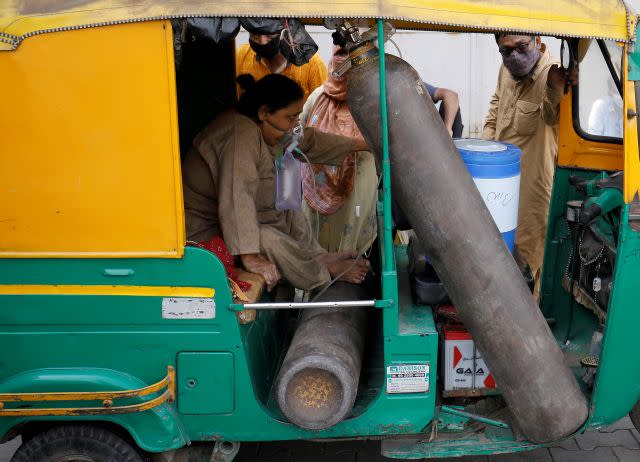
During the second wave, Indians for struggling for access to basics like oxygen.
Mathur’s was in no way an isolated incident. By mid-April, doctors had begun treating patients even without Covid-positive tests, especially given that the results of an RT-PCR test would take up to four days to arrive. In most cases, those who got successfully tested had a “contact.”
“During this time, a common phrase floated around a lot was that ‘the worst punishment in this country is to be poor,’” says Delhi resident Nikita K Gupta, a senior consultant at a human resources consultancy. “The corollary to that: In order to survive in India, one needs money and contacts.” After trying for several days to find a test, as Mathur did, Gupta gave in and dialed someone in her network to help her.
“We called 13 labs and nobody even answered their phones,” says Ruchita Chandrashekar, a behavioral health researcher and psychologist. “Finally, we called one of my flatmates’ uncles in Lucknow who had to pull some strings and call a lab.”
Consulting a doctor was another Herculean task; only after trying three doctors did Chandrashekhar find one who was willing to give her a consultation over WhatsApp. “The doctors were also so drained and exhausted that they weren’t exactly proactive. It was a textbook prescription that wasn’t customized to patients,” she says.
By this time, parking areas in hospitals were flooded with patients on stretchers, waiting for their turn to receive some form of medical attention. Soon even knowing someone in the highest political echelons would be of little use. On April 27, Ashok Amrohi, a former Indian diplomat, died in the parking lot of Medanta Hospital in Gurugram after waiting for an oxygenated bed for nearly five hours. India’s foreign minister offered condolences, but even a high government functionary could not come to the former diplomat’s rescue.
In fact, some diplomatic missions in Delhi sent out SOS calls on social media to volunteers like Srinivas BV, a Youth Congress politician, asking for his assistance for oxygen cylinders. Meanwhile, some Indians struggled to get even the basics to manage fevers, let alone access to life-saving drugs.
The wild hunt for remdesivir and Fabiflu
“I was very surprised about the wait for medicines, honestly. At one point, paracetamol 650 [a household drug for fevers] was unavailable, which is something I never thought could happen,” says Mathur.
Similar experiences were reported by nearly everyone caring for Covid-19 patients at home in April and May. “Our prescription had drugs like Fabiflu and it was a complete strain to look for it with chemists and beg on Twitter,” Chandrashekhar says.
Leading doctors in India were also critical of the government’s Covid-19 treatment protocol, which included drugs such as Fabiflu and ivermectin that did not improve outcomes in patients. “Medical advice at this time was definitely very confusing because there was a lot of conversation online about what works and what doesn’t. But you’re also so anxious and scared as your symptoms get worse, even though they are mild, but you don’t know what to do if your doctor insists that you find Fabiflu,” Chandrashekhar says.
Similarly, intravenous drugs like remdesivir and tocilizumab were scarce, and caregivers were left to their own devices for procuring these drugs in the open market. This, naturally, created a black market for drugs and even equipment like flow meters and oxygen masks. “A flow meter costs up to Rs2,000 ($27) and I saw it being sold at chemists for Rs8,000-Rs18,000,” says TISS’s Singh.
This black market existed despite the fact that by mid-April, governments in Delhi and elsewhere began regulating the supply of essential drugs, and stopped their sale in the open market. By an official count, over 170,000 people lost their lives between April 1 and May 31, the peak of India’s second wave. The number of deaths in just these two months was greater than the total death toll up until April.
With figures like those, it was only natural that nearly everyone in India—and among the diaspora abroad—knew of at least one distant friend or relative suffering from Covid-19. “It’s not easy to get through a day after hearing about the deaths of at least two people one would have known in their lifetime at some point of time,” Gupta says.
And it’s that much harder when you lose a parent while you’re thousands of miles away.
Death and the impossibility of grieving
Sakshi’s 67-year-old father-in-law, living in Bengaluru, was in perfect health and even tested negative on an RT-PCR test towards the end of April. But in early May, he began experiencing disconnected symptoms such as swelling in his legs. By May 29, he had died.
In the course of that one month, Sakshi, a product manager at a software company in Melbourne, and her husband were frantically organizing care for her father-in-law from afar.
“We never got to know what medicines he was given. We were told how he was doing, once a day, sometimes once in two days—by a coordinator (not a doctor, not a nurse),” she says. “His phone used to get discharged, we couldn’t get in touch with him. He had stopped replying to messages and calls because he was on oxygen support and seriously ill.” Her mother-in-law, brother-in-law, and his family, all living in Bengaluru, would try to coordinate locally, while Sakshi and her husband attempted to reach the hospital for updates in the morning. Every day, a doctor or a nurse, even those who were empathetic, would give the family conflicting information about how sick he was.
“Till date, we keep thinking what we could have done—he was absolutely alone while fighting a deadly disease. It was his first and last time in a hospital in his life,” Sakshi says. “No friends and family around him. He couldn’t speak for the weeks he was there because he was constantly on an oxygen mask. He did not get a single chance to say anything to us in those two weeks. By the time we were told he was critical, he had probably died. We don’t know,” she adds.
Sakshi’s family’s ordeal didn’t end there. While her father-in-law was cremated without much hassle, her family had to struggle with the last rites for her grandmother in Delhi, who also died from Covid. “A relative had to stand in a queue for five hours to get a token for her cremation, and then two of her sons were allowed to cremate her, after waiting in a queue again,” she says.
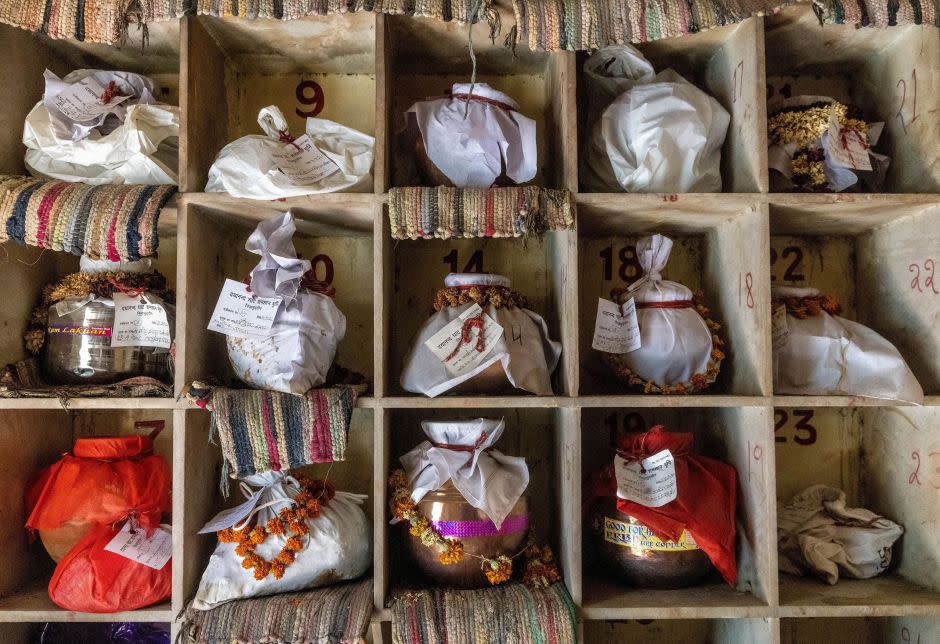
Urns with ashes of those who died of Covid-19 in India, waiting to be immersed in the river according to Hindu rites.
Student volunteers working with TISS’s Covid-relief helpline reported up to five calls a day from non-resident Indians coordinating care for their elderly parents back home in India. Even those living in India, but locked down in different cities, felt helpless and nervous for their parents. “I tried to go really deep into work and it was a welcome distraction because it kept me busy not fretting about my parents from 2,200 km away,” says Jayati, a 31-year-old executive with a technology company. “I was extremely anxious about how we would manage if we needed a hospital bed or oxygen.”
If there was one impression the second wave left with many Indians with it was that they were on their own. “By the way things are going, there will most certainly be a third wave. There will be good Samaritans who help out but it will eventually be up to you to ensure you don’t die,” Jayati says.
Only by remembering these lessons can India prevent another catastrophe.
Lessons from the second wave and the Spanish flu
Health experts, and even government expert groups, have warned that India’s third wave of Covid-19 is almost imminent. To mitigate the disaster of the second wave, healthcare systems must be alert for any spike in cases.
“A wave on an epidemiological curve is really a tsunami of suffering in the real world; we need to prevent it,” says Dr Swapneil Parikh, physician and author of The Coronavirus Book. “If we scale out vaccinations on a war footing then that will help reduce infections and should decouple increasing cases from increasing hospitalizations and deaths in those who are vaccinated.”
Those who observe pandemics believe that outbreaks can end in many ways. One measure is vaccinations, which can induce the desired level of herd immunity. Another possibility is a virus mutating to a less lethal variant. “The 1918 influenza pandemic broke out in two waves in India and two possible theories of why it went away are herd immunity and virus mutation,” explains Chinmay Tumbe, assistant professor of economics at the Indian Institute of Management in Ahmedabad, and author of The Age of Pandemics.
Tumbe finds many similarities between the Spanish Flu of 1918 and the Covid-19 pandemic. “It was similar to 1918 though not as bad as it was then, when some 20 million people perished. In both cases, the second wave was lethal, which led civil society to step in and help as the public health system collapsed,” he says.
These similarities exist also in part because history and its lessons are forgotten.
Tumbe says that past pandemics have proven that they come in waves, that systems must remain alert with each wave, and that tracking viral mutations is important. One also has to be guarded against arguments of “natural immunity, because India lost 40 million people between 1817-1920 due to cholera, plague, and influenza pandemics,” he says.
Those grim numbers—as well as the grief, loss, and suffering of Covid-19’s second wave—must act as a cautionary tale for pandemic management. “Even as the second wave is ebbing, thousands of Indians are still dying every single day,” Parikh warns. “We need to prevent the third wave. If we are hit by a third wave and have to manage it, we have already failed.”
Sign up for the Quartz Daily Brief, our free daily newsletter with the world’s most important and interesting news.
More stories from Quartz:
American workers are quitting at the highest rate in decades
India’s Covaxin has more than one reason to be on the WHO vaccine list

